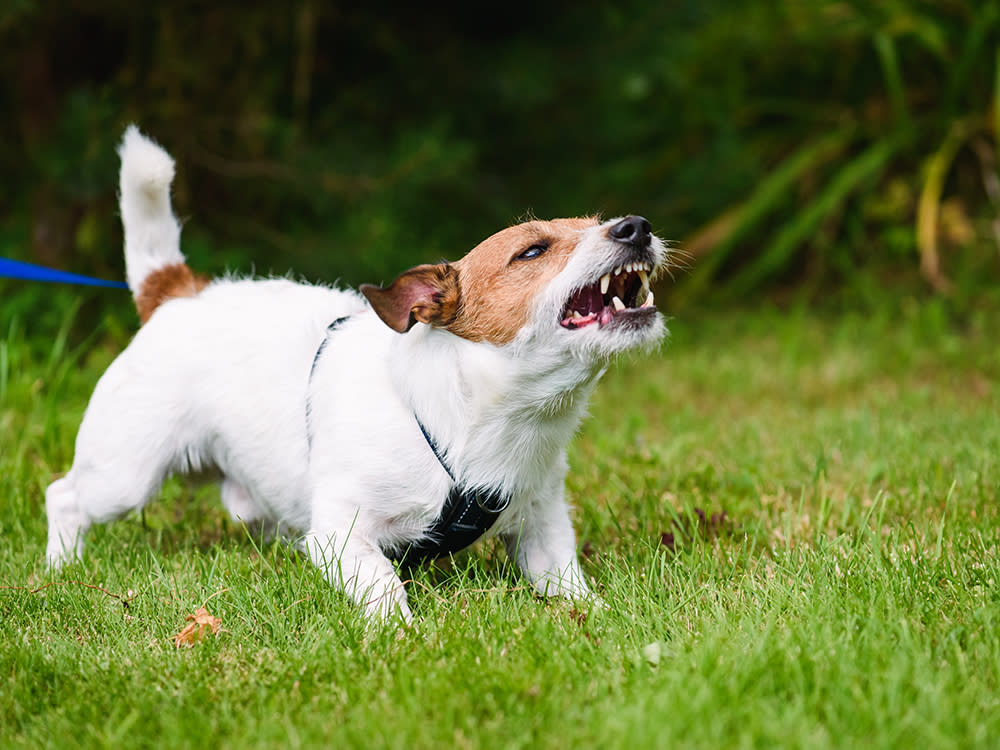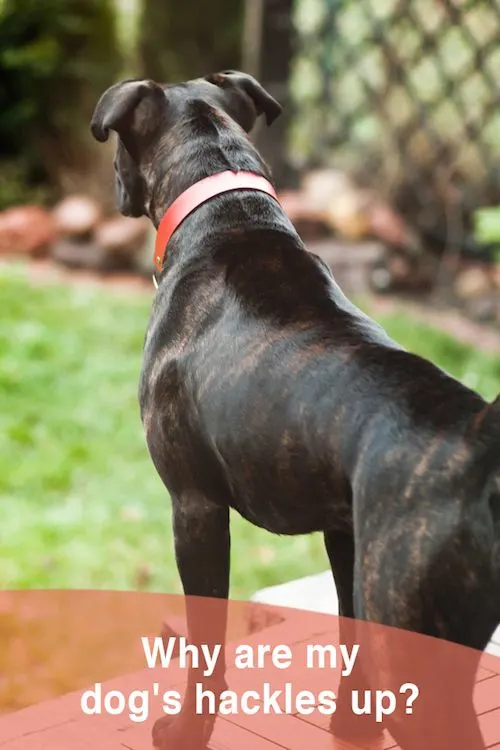
Piloerection pilo referring to hair in medical terms. Hackles are hairs that are located along a dogs spine.

Watching your dogs body language along with the show of hackles will help you understand the situation.
Hackles on a dog. Raised hackles in dogs mean they are on high alert. They could be having a response brought on by fear dominance surprise insecurity or uneasiness about a situation. The nervous system automatically causes piloerection along the neck and back.
This is done automatically and not under conscious control of the dog. Hackles are the hairs that run along a dogs spine. They typically begin at the neck and extend to a dogs tail.
Below a dogs skin are muscles that are attached to his or her hackles. When a dogs hackles rise it is an involuntary reaction to something in the environment. Its a bit like us getting goosebumps when hearing a great piece of music or see something emotional.
Technically called piloerection raised hackles can appear in. There is actually a medical term for the reaction. Piloerection pilo referring to hair in medical terms.
Raised hackles could be a sign of. Hackles are the hairs that run along a dogs spine. They typically begin at the neck and extend to a dogs tail.
Most dogs hackles stand in line along their backbone. However you may notice hackles across your dogs shoulders along with parts of the back or even at the base of the tail. If you are uncertain as to why your dog may raise his hackles consult with a veterinary behaviorist.
Getting Warmed Up The sensation of cold has been associated in several animals with the activation of the sympathetic nervous system causing the contraction of the arrector pili muscles. Raised hackles in dogs mean they are on high alert. They could be having a response brought on by fear dominance surprise insecurity or uneasiness about a situation.
The nervous system automatically causes piloerection along the neck and back. A dogs hackles consist of the hairs along the backbone. They generally start from the neck area and go up to the tail.
Such hairs have a piloerection function meaning that they have a tendency to raise under certain circumstances. All dog breeds have this feature however it is easier to see in some than in others. A dogs hackles consist of the hairs along the backbone.
They generally start from the neck area and go up to the tail. Such hairs have a piloerection function meaning that they have a tendency to raise under certain circumstances. All dog breeds have this feature however it is easier to see in some than in others.
Raised hackles are a physical reaction to an emotional response that your dog encounters over some type of situation. For example if your dog perceives a threat. It could signal that your dog is experiencing anxiety fear nervousness anger or excitement.
You need to know the context in which this is taking place. Your dogs hackles up is not a body language but it is a behavior that causes much concern and confusion among doggie folk. Hair doesnt talk yet it does tell the emotional state of a dog.
The medical term for the hackles going up is. A dogs hackles run from the back of the neck to the base of the tail. Dogs have special muscles in their skin that are attached to their hair follicles these muscles are capable of fluffing the coat by trapping air between the hair shafts.
When a dogs hackles rise it is an involuntary reaction to something in the environment. Raised hackles do not qualify as a behavior as they are an involuntary reflex triggered by something that put the dog into a state of arousal. There is actually a medical term for the reaction.
Piloerection pilo referring to hair in medical terms. Like goosebumps on us This explains it pretty well. Hackles are hairs that are located along a dogs spine.
They start at the neck of the dog and go to a dogs tail and there are muscles called arrector pili attached to them. When these muscles are activated air is trapped between hair shafts. Many people assume that hackling is a sign of aggression and that any dog with raised hackles is looking to fight.
In fact dogs that are raising their hackles are more likely feeling startled fearful lacking confidence nervous or even excited. Hunting dogs often raise their hackles when they are hyper-focused and pointing at a bird of prey. People often assume that when a dog has raised hackles that it is displaying dominant aggressive behavior.
While this may be the case and one should always be respectful of a dogs show of reactivity there are multiple reasons for this phenomena taking place. The hackles are found all along the dogs back over his shoulders and at the base of his tail. Dogs do respond differently to a perceived danger and in these situations your dog may raise some or all his hackles.
Watching your dogs body language along with the show of hackles will help you understand the situation. Piloerection in dogs is an involuntary reaction just like the goose bumps we humans get so its important to understand that dogs cant control it. While aggressive dogs do exhibit piloerection sometimes its not always a sign of aggression.
Its important to observe a dogs other body language including posture and ear position in addition to the surrounding. The War Against Dog Hackles. Cornering can induce fear of aggression growling possibly resulting in snapping.
Aggression is really a natural and standard behavior for dogs to display to a certain degree. In such situations the aggression is a form of fear response arising as a kind of self-defense and self-protection. My biggest pet peeve.
The medical term for hackles. There seems to be a ton of confusion over the meaning behind your dog having a piloerection. It is a form of communication but it is displaying a state of being and is 100 involuntary.
It is communicating that your dog is excited nervous angry afraid unsure etc. Raised hackles do not qualify as a behavior as they are an involuntary reflex triggered by something that put the dog into a state of arousal. There is actually a medical term for the reaction.
Piloerection pilo referring to hair in medical terms. Raised hackles could be a sign of fear anxiety excitement nervousness or anger. In birds the hackle is the group of feathers found along the back and side of the neck.
The hackles of some types of chicken particularly roosters are long fine and often brightly coloured. These hackles may be used in fly fishing as lures. Drawing of a dog with raised hackles.